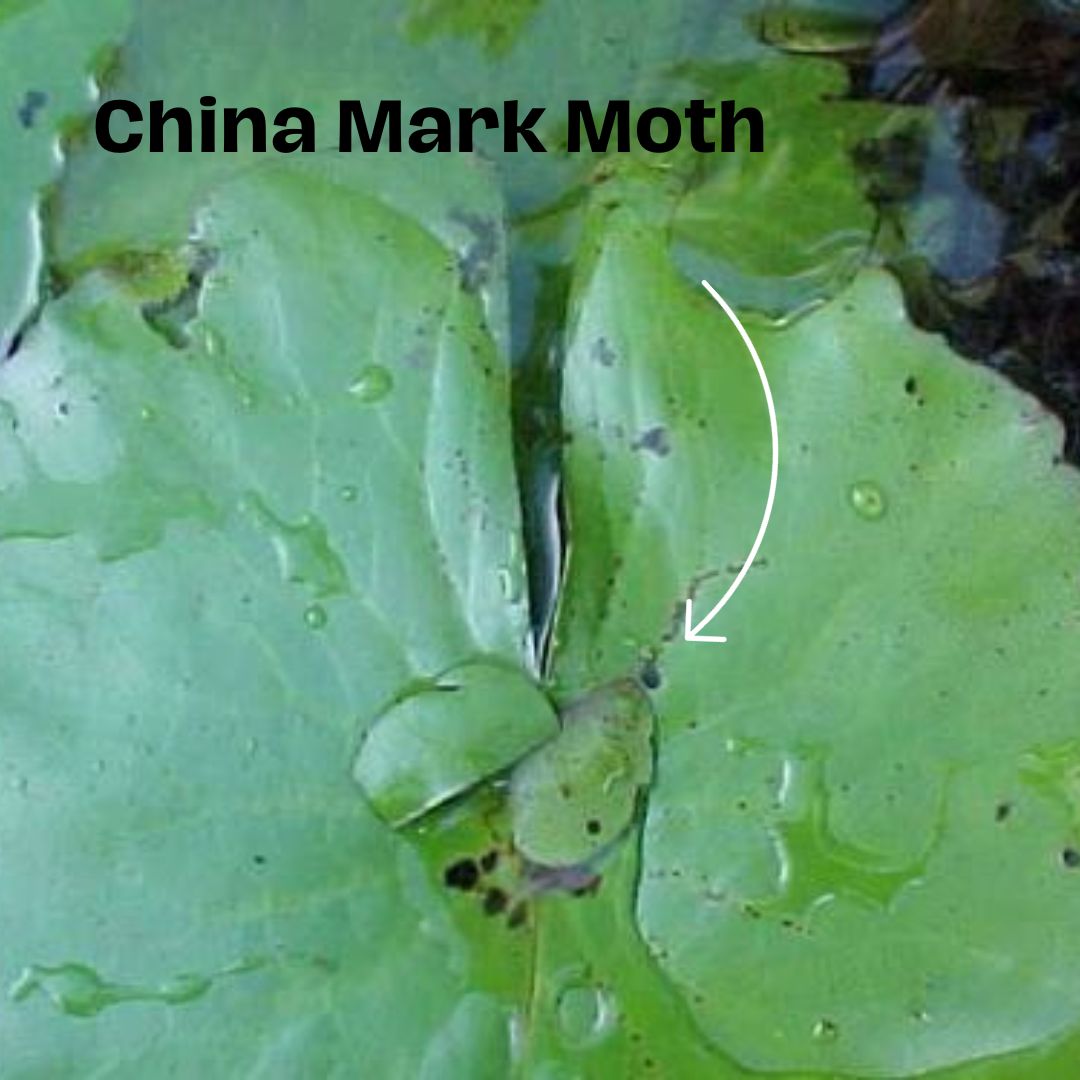What is eating holes in my waterlily?
If you have something munching holes in your waterlily leaves it is a good time to investigate what the culprit may be. The holes could be from terrestrial snails, aquatic snails, fungus, or moth larvae. In the following we will address the larvae of the China Mark moth, which can wreak havoc on your waterlilies if you don’t take action.
About the China Mark Moth
This 1-inch long crambid snout moth has those dusty soft wings. Shading from white, to a light tan, with a variety of darker brown patterns across its body. These little insects can seriously damage the ecstatic appearance of our home water containers. To avoid an infestation which could potentially wipe out waterlilies its helpful to know a bit more about how these moths establish themselves in an ecosystem.
As moths they come into the pond to mate, laying eggs on the surface of the waterlily foliage, establishing a lifecycle which can infest a pond for generations if overlooked. We begin to notice the impact of the China Mark Moth when we look down, with a frown, because we see the puka (holes) in our waterlily foliage.
How to identify an Infestation
The pads will start to look like a bunch of little bullets were shot all through it. Pap! Pap! Pap! Pap! At other times, there will just be that one big puka, where feeding results in leaf skeletonization. The veins of the pad will be seen since the flesh around has been gobbled away. This puka tends to be found right in the center of a pad, indicating there is a mature larva which has likely begun its decent down the stem.
What to do: Heavy Prune of the Affected Lily Pads
Prune any pads that have China Mark moth holes or a bump in the stem. If China Mark moth holes or stem bumps are present, follow the stems down to the base or crown of the waterlily and prune it off from there. It is good to prune all the way to the base of the plant in general for the overall health of a waterlily. If you happen to spot a larva hiding under a serrated leaf cutting, squish it with your fingers and feed it to your fish.
If the problem persists: Next steps
If a heavy pruning and squishing the larvae does not take care of it, spray BT (bacillus thuringiensis) as a foliar spray at dusk, daily, until the problem is under control. BT is a natural bacterium that kills the larva but is safe for pets and fish. A regular 32oz spray bottle of water will require 1tsp of BT liquid added to it for effective results. As with many sprays, it is best applied at the end of the day since the caterpillars and larvae of the China Mark Moth are active at night. Ideally aim for spraying at dusk, on a clear evening.
What else could it be?
What if the holes in my pads are not from China Mark Moth? Terrestrial snails or aquatic snails can also affect waterlilies. If you have land snails munching on your leaves, wrap the bottom of your water garden with copper tape, to discourage snail from climbing up the sides of your container and foraging on your aquatic plants. If you suspect your aquatic snails are eating your water lily pads, check out this article on snails HERE. Snails will only go after your lily pads if there is no other food for them in the ecosystem, such as algae.
Garden Ponds is located in Kilauea, next to Anaina Hou Mini Golf. We are open Wednesday through Friday, noon to 5 p.m. and Saturdays we are open 10-5. Giveus a call at 808-828-6400 or visit our website www.gardenpondskauai.com
